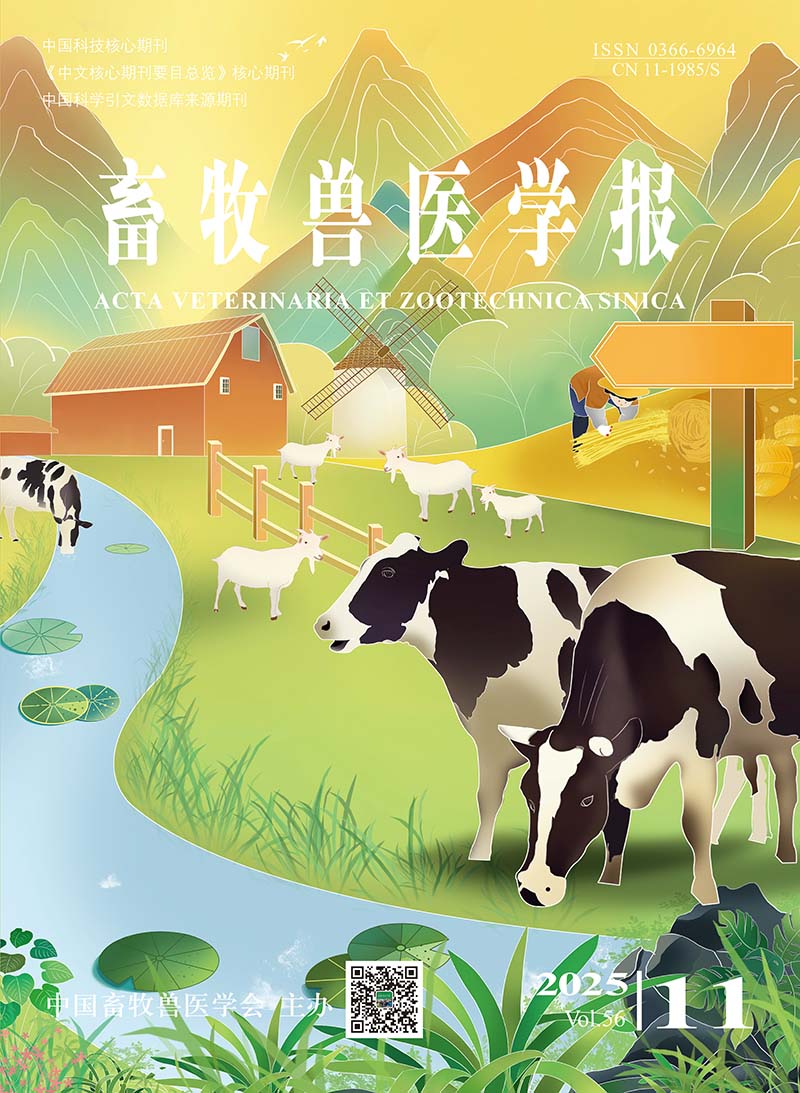-
Effect of Enterococcus faecium on Growth Performance and Intestinal Barrier of Broilers Infected with Eimeria tenella
- JIAO Yuzhou, YANG Huanhuan, LU Yao, SHI Congcong, XU Xiaojuan, CAI Xuwang
-
2022, 53(4):
1210-1219.
doi:10.11843/j.issn.0366-6964.2022.04.021
-
 Abstract
(
328 )
Abstract
(
328 )
 HTML( )
HTML( )
 PDF (2646KB)
(
298
)
PDF (2646KB)
(
298
)
-
References |
Related Articles |
Metrics
The present study was designed to evaluate the effect of dietary supplementation with Enterococcus faecium on growth performance, survival rate, caecal lesion, fecal oocyst excretion and intestinal barrier in broiler chickens challenged with E. tenella infection. Total of 180 one-day-old broiler chickens (Ross 308) with similar body weight were randomly distributed into 5 groups, including control group (NC), positive group (PC), salinomycin group (SAL), E. faecium group (EA and EB). Chickens in NC and PC groups were fed with basal diet, while SAL, EA, EB groups were fed with the diet supplemented with 70 mg·kg-1 salinomycin, 1.0×108 CFU·kg-1 E.faecium and 2.5×109 CFU·kg-1 E.faecium, respectively, until the end of the experiment. At 15 days of age, the chickens in all groups except NC were orally infected with 1.0×105 sporulated E. tenella oocysts. Then, the anticoccidial efficacy of dietary supplementation with E. faecium was evaluated by the average daily gain (ADG), oocyst per gram faeces (OPG), caecal lesion score, histopathological examinations and gene expression levels of cecal barrier related molecules (iNOS, MUC2, Occludin, JAM2, ZO-1). The results showed that: 1) Compared with NC group, ADG was significantly increased in EA and EB groups before treated with E. tenella (P<0.05). The ADG of SAL and EB groups were higher than that in PC group after infected with E.tenella (P<0.05). 2) Compared with PC group, the OPG in all pre-treated groups (SAL, EA, and EB) were significantly reduced (P<0.05). Besides, the obvious pathological damage with immune cell infiltration and villi blunting was observed in the cecum in PC group compared with pre-treated groups, while no significant difference was found in all pre-treated groups regard to the lesion score (P>0.05). 3) During the whole test period, the survival rates of NC, PC, SAL, EA and EB groups were 100%, 58.33%, 83.33%, 58.33% and 75.00%, respectively. 4) Compared with NC group, the expression of iNOS, MUC2, Occludin, JAM2, ZO-1 in PC group was significantly decreased (P<0.05). The expression of iNOS in all pre-treated groups and MUC2, Occludin, JAM2 in EB group showed a remarkable increase compared with PC group (P<0.05). In conclusion, the results of this study are promising and indicate many beneficial effects of E. faecium-supplementation in poultry diets to reduce the negative consequences of E. tenella disease by regulating gene expression of intestinal barrier related molecules.






